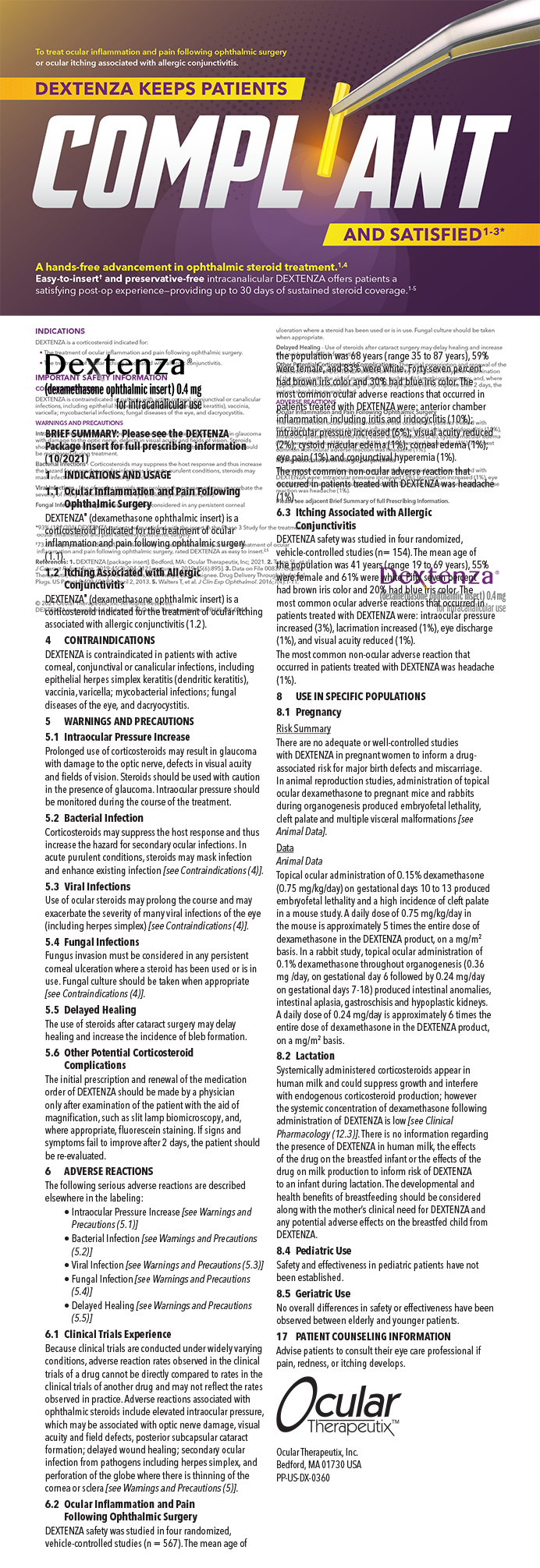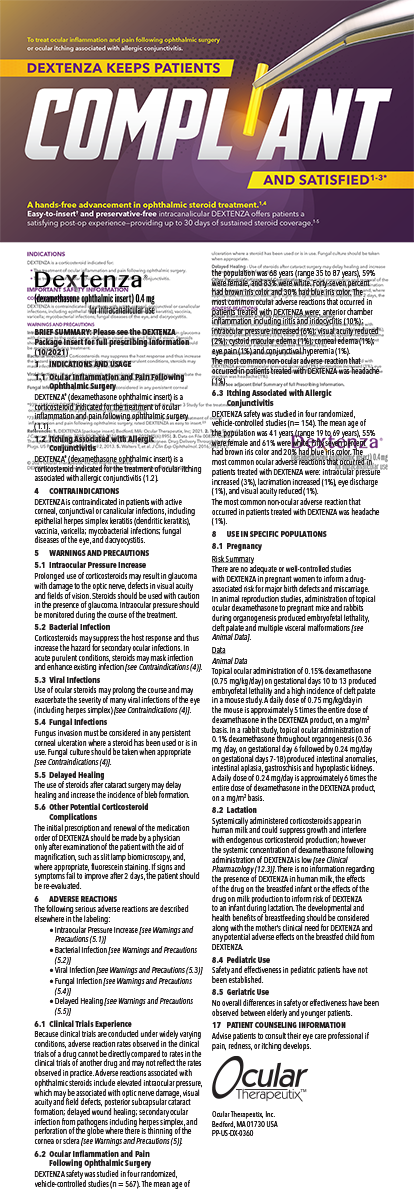

Thanks to the introductions of laser cataract surgery, advanced-technology IOLs, and options for surgical astigmatic correction, modern cataract surgery has evolved from a visual restorative surgery to refractive surgery. Today, high patient expectations require ophthalmologists to accurately correct spherical and astigmatic errors as well as presbyopia, and new lens technologies offer us the possibility to do so.
The accuracy, repeatability, and consistency of modern cataract surgery have transformed patient expectations and increased patients’ awareness of postoperative refractive side effects. Patients now commonly expect to achieve spectacle independence for distance, intermediate, and near vision.
To provide patients with spectacle independence for both near and distance vision, use of presbyopia-correcting IOLs has become commonplace in many practices.1,2 For premium lens candidates, it is essential to assess their expectations and discuss with them the expected results in their specific situations. Patients with underlying ophthalmic conditions such as corneal pathologies or epiretinal membranes should be counseled regarding reasonable expectations specific to their preoperative diagnosis before undergoing cataract surgery.
It is equally important to assess patients’ personality types and their goals for their vision. In recent years, patients submitting premium IOL malpractice claims have frequently cited an inadequate informed consent process as the single most important driver for their pursuing legal action.3
The great majority of patients who undergo premium IOL implantation with a toric, multifocal, or extended depth of focus (EDOF) lens are satisfied with their results. Tradeoffs, which are more commonly seen with older generations of premium IOLs, can include decreased contrast sensitivity, higher incidence of glare and halos, and spiderweb phenomenon.1,4 Among the newer generations of multifocal lenses, wider concentric diffractive rings in certain lens designs have been shown to reduce glare, halos, and internal aberrations, thus improving patient satisfaction. Today, identifiable causes of dissatisfaction following presbyopia-correcting IOL implantation are most commonly due to residual refractive error and dry eye disease (DED).5
The best way to avoid unhappy patients after surgery is to identify potential problems before surgery. This article explains a systematic process for identifying problems preoperatively and addressing any problems that occur despite our preventive efforts.
USE A SYSTEMatIC APPROACH
As presbyopia-correcting IOLs are implanted with more frequency and the number of cataract surgeries performed annually grows, residual refractive error is becoming more common.5 Accurately identifying preexisting pathology preoperatively can help to improve patient satisfaction postoperatively. Refractive cataract surgeons should approach refractive cataract patients in a systematic way, both before and after surgery. Factors that may contribute to visual symptoms can be identified by beginning in the anterior segment and proceeding back to the retina.
Cornea. Premium lens candidates should be screened for corneal pathology and DED. In our clinic, we perform Placido-ring topography on all cataract patients to evaluate the ocular surface, and we use objective and subjective tests such as patient questionnaires, topography, slit-lamp examination, and point-of-care testing for MMP-9 and osmolarity to identify DED.
Undiagnosed conditions such as DED, Salzmann nodules, epithelial basement membrane dystrophy (EBMD), and Fuchs dystrophy can prevent patients from reaching their full visual potential postoperatively, due to increased glare and halos and decreased contrast sensitivity. Furthermore, anterior segment pathology can lead to erroneous preoperative measurements and decrease the accuracy of IOL power calculations in these patients. It is therefore important to stabilize the ocular surface before biometry is performed. Ocular surface disease can be addressed preoperatively using a combination of preservative-free artificial tears, antiinflammatory drops (eg, prednisolone, lifitegrast [Xiidra, Shire], and cyclosporine [Restasis, Allergan]), and more advanced therapy as needed (eg, serum tears, amniotic membranes, scleral lenses).
If the ocular surface was not optimized before surgery, the untreated DED can hamper patient satisfaction postoperatively. If the patient is unhappy after premium IOL implantation, it is advised to begin by again evaluating the ocular surface and aggressively treating any signs of DED or other corneal pathology, including EBMD, Salzmann nodules, and Fuchs dystrophy.
EBMD and Salzmann nodules should be treated with superficial keratectomy or phototherapeutic keratectomy several months before cataract surgery, and the surface should be allowed to heal and stabilize. This will help to avoid suboptimal results and unhappy refractive cataract patients. In patients with Fuchs dystrophy, it is advisable to treat the underlying disease prior to cataract surgery. Sometimes it can be addressed at the time of cataract surgery, for instance by combining Descemet membrane endothelial keratoplasty or Descemet-stripping endothelial keratoplasty with cataract surgery. If these conditions are diagnosed in the postoperative period, the underlying pathophysiology should be treated as a first step.
Residual refractive error. A number of surgical and patient factors may result in residual refractive error and dysphotopsias after premium IOL placement.4-6 Surgical factors include variability in the effective lens position, IOL centration or tilt, and surgically induced astigmatism. Preoperatively, accurate IOL calculations based on topography and biometry are paramount. The top three sources of error, excluding manifest refraction, are axial length, corneal power, and postoperative IOL positioning.7
Unanticipated residual astigmatism occasionally arises following implantation of toric IOLs.8 Sources of residual error with toric IOLs include selection of the wrong toric power, alignment along the wrong meridian, and postoperative rotation of the lens.
It is important to be cognizant of cyclotorsion of the eye in the supine position after toric marking, which is a frequent cause of misaligned toric lenses. Using an intraoperative toric alignment system such as the Verion Image Guided System (Alcon) or the Callisto eye (Carl Zeiss Meditec) may help improve accuracy of alignment. Inaccuracies inherent to the measurement devices, operators, and formulas are all potential sources of error that can lead to patient dissatisfaction.
In unhappy patients who experience visual symptoms secondary to residual astigmatism, methods to alleviate symptoms include spectacles or contact lenses, laser vision correction, corneal relaxing incisions, and rotation of the IOL.8,9 Rotation of a toric IOL by as little as 10º can reduce its effective astigmatic correction by 30%, and a 30º of rotation renders the IOL ineffective in correcting astigmatism. An IOL rotation calculator such as the Berdahl & Hardten Toric IOL Calculator (available at astigmatismfix.com) is a helpful tool. This back-calculator can be used to determine the ideal position of the toric IOL, the magnitude and direction of rotation needed, and the expected residual refraction.
It is advisable to wait a minimum of 1 week after the primary surgery before committing to rotate a toric IOL.10 Although it might seem better to rotate the lens sooner in order to reduce the patient’s wait time, it is more important to wait for the patient’s refraction to stabilize.9 When there is a low likelihood of satisfaction after IOL rotation, such as in an eye with residual spherical error as well as cylinder error, an IOL exchange or laser refractive surgery are good alternatives.
Capsule and retina. Once ocular surface conditions and causes of residual refractive error are eliminated, the next steps in analyzing the unhappy refractive cataract patient are considering structural factors such as lens position or tilt, zonular loss, capsular clarity, and retinal pathology.
The visual performance of multifocal IOLs is sensitive to posterior capsular opacification (PCO) and wrinkling.11 An uneven capsulorhexis and/or PCO can result in glare, halos, and blurred vision. Before performing an Nd:YAG capsulotomy in the latter instance, it is important to attempt to understand whether the patient is unhappy secondary to the PCO or the lens itself, as performing a laser capsulotomy can make subsequent IOL exchange more technically challenging.
Preexisting retinal conditions such as epiretinal membrane, macular degeneration, neovascular disease, and retinal scars can predispose the patient to lower visual acuity. A thorough preoperative workup should include an OCT of the macula to reveal pathologies such macular pucker or drusen. Presence of these conditions can lead to decreased contrast sensitivity or visual acuity, which can compound any visual symptoms experienced due to IOL implantation. For our premium IOL patients, we always recommend an OCT of the macula.
Poor adaptation. Patient factors leading to dissatisfaction with premium IOLs can include an inability to adapt to the vision with a multifocal IOL. Or they may be secondary to changes in the patient’s refraction, ocular health, or pupil size. Any of these factors can reduce the patient’s relative perceived effectiveness of the IOL.6
Challenges with neural adaptation and binocularity can affect those with multifocal IOLs; this occurs because the lens delivers multiple simultaneous images to the retina, causing glare, halos, or double vision.1 Tsaousis et al evaluated the effect of binocularity on visual acuity after the placement of bilateral diffractive multifocal IOLs. In testing 15 months after bilateral surgery, they found binocular vision to be superior to monocular vision of the better-seeing eye for distance, intermediate, and near visual acuity.12
With older IOL models, 4% of patients required IOL exchange secondary to poor neural adaptation.1 With newer models, patients are able to adapt more easily and have fewer visual symptoms, and the rate of IOL exchange is probably much lower.
In general, if the surgeon is unable to find a cause for a patient’s unhappiness, it is often best to allow the patient to undergo neural adaptation for a period up to 6 months before considering IOL exchange. When patients are given adequate time to adjust to their new lenses, they typically learn to adapt to the blurred or simultaneous retinal images, resulting in enhanced visual performance.
CONCLUSION
Even with extensive patient education, proper management of expectations, and thorough preoperative evaluation, there is a chance that some patients may be unhappy after premium IOL implantation. If the patient is dissatisfied with his or her vision following surgery, it is important to take time to listen. Frequently, employing a systematic approach to evaluate the whole eye and identify ocular pathology step by step, as discussed here, will help. Use of this stepwise approach, with adequate treatment of pathology followed by reassessment, will undoubtedly help to minimize or eliminate patient dissatisfaction following refractive cataract surgery.
1. de Vries NE, Webers CAB, Touwslager WRH, et al. Dissatisfaction after implantation of multifocal intraocular lenses. J Cataract Refract Surg. 2011;37(5):859-865.
2. Calladine D, Evans JR, Shah S, Leyland M. Multifocal versus monofocal intraocular lenses after cataract extraction. Cochrane Database Syst Rev. 2012;(9):CD003169.
3. Pineda R. Informed consent: Not just a signature on a document. EyeWorld. February 2013. https://www.eyeworld.org/article-informed-consent–not-just-a-signature-on-a-document. Accessed March 20, 2019.
4. Kamiya K, Hayashi K, Shimizu K, Negishi K, Sato M, Bissen-Miyajima H. Multifocal intraocular lens explantation: A case series of 50 eyes. Am J Ophthalmol. 2014;158(2):215-220.e1.
5. Gibbons A, Ali T, Waren D, Donaldson K. Causes and correction of dissatisfaction after implantation of presbyopia-correcting intraocular lenses. Clin Ophthalmol. 2016;10:1965-1970.
6. Pepose JS. Maximizing satisfaction with presbyopia-correcting intraocular lenses: The missing links. Am J Ophthalmol. 2008;146(5):641-648.e641.
7. Olsen T. Sources of error in intraocular lens power calculation. J Cartaract Refract Surg. 1992;18(2):125-129.
8. Berdahl JP. Correcting residual astigmatism after the implantation of a toric IOL. Cataract and Refractive Surgery Today. 2012;6:44-46.
9. Berdahl JP. Managing residual astigmatism after toric IOL surgery. Ophthalmology Times. September 15, 2017. https://www.ophthalmologytimes.com/refractive/managing-residual-astigmatism-after-toric-iol-surgery. Accessed March 20, 2019.
10. Oshika T, Inamura M, Inoue Y, et al. Incidence and outcomes of repositioning surgery to correct misalignment of toric intraocular lenses. Ophthalmology. 2018;125(1):31-35.
11. Woodward MA, Randleman JB, Stulting RD. Dissatisfaction after multifocal intraocular lens implantation. J Cataract Refract Surg. 2009;35(6):992-997.
12. Tsaousis KT, Plainis S, Dimitrakos SA, Tsinopoulos IT. Binocularity enhances visual acuity of eyes implanted with multifocal intraocular lenses. J Refract Surg. 2013;29(4):246-250.




